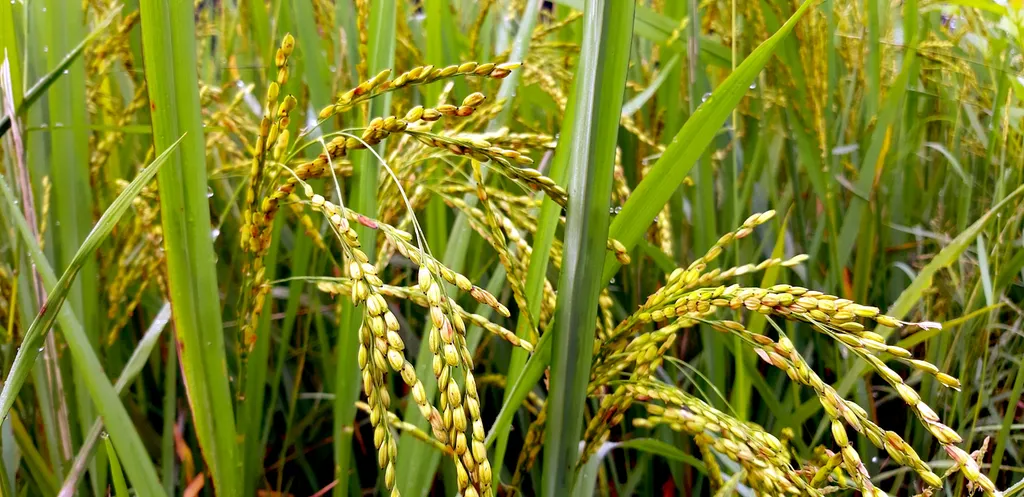In the heart of Thailand, a groundbreaking study led by Walailak Laothaworn from the Department of Biology at Naresuan University is reshaping the future of rice cultivation. Laothaworn and her team have successfully enhanced the bacterial blight (BB) resistance of the high-yielding rice cultivar ‘Phitsanulok2’ (‘PSL2’) through a sophisticated breeding technique combined with cutting-edge genomic analysis. Their work, published in the ‘Journal of Human, Earth, and Future’ (translated as ‘Journal of Past, Present, and Future’), offers promising solutions to a persistent challenge in global rice production.
Rice bacterial blight, caused by the pathogen Xanthomonas oryzae pv. oryzae (Xoo), is a significant threat to rice yields worldwide. While ‘PSL2’ is prized for its high yield potential and insect resistance, its susceptibility to BB has limited its widespread adoption. To address this, Laothaworn and her team employed a strategic approach: introgressing the Xa21 gene, a broad-spectrum resistance gene from the donor parent ‘IRBB21’, into ‘PSL2’ through backcross breeding. This method allows for the precise transfer of desirable traits while minimizing genetic disruption.
The team’s innovative use of whole genome sequencing (WGS) assisted selection enabled them to identify and select the best-performing introgression lines with remarkable accuracy. “By combining advanced backcross breeding with WGS-assisted selection, we were able to develop rice lines that not only exhibit enhanced BB resistance but also maintain the high yield potential and other desirable traits of ‘PSL2’,” Laothaworn explained.
The results were impressive. Three BC5F6 introgression lines were evaluated under field conditions, showing increased plant height and grain yield compared to both parents, with no significant differences in tiller numbers. Lines ‘A’ and ‘B’ demonstrated moderate resistance (MR) to BB, while line ‘C’ showed full resistance (R). WGS revealed that these lines retained a high genomic similarity with ‘PSL2’, with notable donor genome segments retained on chromosome 11 and heterozygous regions observed on several other chromosomes.
One of the most intriguing findings was the identification of seventeen Xa21-mediated immune response genes. These genes play a crucial role in the plant’s defense mechanism against BB, offering valuable insights for future breeding strategies. “Understanding the genetic basis of BB resistance is key to developing more resilient rice varieties,” Laothaworn noted. “Our study not only advances the field of rice breeding but also provides a roadmap for leveraging genomic tools to enhance crop resilience.”
The implications of this research extend beyond the laboratory. For farmers, the development of high-yielding, BB-resistant rice lines means increased crop security and potentially higher yields. For the agricultural industry, it opens doors to more sustainable and efficient breeding practices. As the global population continues to grow, the demand for food security becomes ever more pressing. This study offers a beacon of hope, demonstrating the power of combining traditional breeding techniques with modern genomic tools to tackle one of the most pressing challenges in rice production.
The research published in the ‘Journal of Past, Present, and Future’ not only highlights the potential of WGS-assisted selection but also underscores the importance of interdisciplinary collaboration in driving agricultural innovation. As we look to the future, the insights gained from this study will undoubtedly shape the development of more resilient and productive rice varieties, ensuring food security for generations to come.

